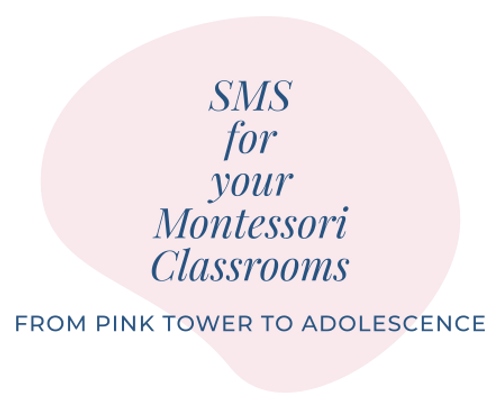Embracing Montessori Solutions for Teacher and Student Well-Being
- Anne Slamkowski
- Sep 23
- 4 min read
Updated: Oct 7
Maria Montessori wrote, “The child is both a hope and a promise for mankind” (Education and Peace, 1949). More than ever, our schools need hope and a renewed promise to meet the needs of both adolescents and the adults who guide them.
I often visit classrooms where teachers feel out of control. They are exhausted and desperate for ideas to support their students. At the same time, they long for support themselves. In those same spaces, I see adolescents testing boundaries, pushing back, or shutting down. They do this not because they don’t care, but because they are searching for a sense of belonging, purpose, and connection.
These are not isolated moments. They are daily realities in our schools. Teacher burnout and student disconnection are the twin crises of our time.
The Challenges Schools Face
Teacher Burnout
Teachers are leaving classrooms in record numbers. The Economic Policy Institute reported in 2022 that educators earn more than 26% less than similarly educated peers. This marks the widest gap since the 1960s (EPI, 2023). Alongside low pay, high workloads, and emotional strain, these factors drive burnout and turnover.
Student Mental Health and Belonging
Adolescents are also in crisis. The CDC reports that over 40% of high school students experienced persistent sadness or hopelessness in 2021. Many cite social disconnection as a key factor (CDC, 2023). Teachers and administrators see this reflected in rising anxiety, depression, and behavioral concerns post-COVID. Schools urgently need structures that reduce stress for adults and rebuild community for students. Montessori offers both.
Montessori Secondary Solutions
Supporting Teachers Through Collaboration
Montessori’s idea of the prepared environment extends to adults. When teaching teams establish collaborative norms, share responsibility, and receive professional development, they reduce stress and build resilience. My program, Prepared to Lead: Building Strong Montessori Teaching Teams, focuses on precisely this: helping teachers support each other so they can better support their students.
Meeting Adolescents’ Developmental Needs
Montessori recognized adolescence as a stage of transformation. This stage encompasses social, emotional, and moral development, as well as academic growth (From Childhood to Adolescence, 1948). Secondary environments respond with:
Community meetings that teach respectful dialogue.
Solo/reflection time to regulate emotions and build self-awareness.
Purposeful work like projects, service learning, and micro-economy that restore meaning and confidence.
Prepared environments that feel more like shared workspaces than rigid classrooms, balancing autonomy with structure.
Neuroscientist Daniel Siegel affirms this approach. Adolescents thrive in environments that provide opportunities for exploration, belonging, and meaningful relationships (Brainstorm, 2013).
Rebuilding Belonging After COVID
After years of disrupted schooling, many students struggle with focus and social skills. Montessori classrooms directly address this by prioritizing relationships over content pacing. Non-competitive group initiatives, project-based learning, and co-created norms provide adolescents with the tools to reconnect with themselves and one another.
Practical Strategies for Schools
Schools don’t need to adopt a full Montessori program overnight to benefit from these practices. Here are simple ways to begin:
Dedicate time for weekly group initiatives (team-building without competition).
Build checklists and work cycles that support independence while providing a structured approach.
Introduce community meetings as a regular forum for reflection and conflict resolution.
Support teachers with professional development focused on collaboration, observation, and leadership skills.
These strategies reduce teacher stress while helping adolescents feel safe, respected, and valued.
Why It Matters
Montessori secondary education isn’t just a method; it’s a response to what young people and educators need right now. It addresses burnout by creating collaborative adult environments and supports belonging by preparing classrooms where adolescents can thrive socially, emotionally, and academically.
If we want to heal our schools, we must invest in approaches that restore both teacher sustainability and student humanity. Montessori showed us a path forward more than a century ago. The time to embrace it is now.
The Path Forward
Creating a nurturing environment is essential. We must prioritize the well-being of both teachers and students. By adopting Montessori principles, we can foster a culture of collaboration and connection. This approach not only enhances the educational experience but also cultivates a sense of community.
Building Sustainable Practices
To truly make a difference, we need to implement sustainable practices. These practices should focus on:
Continuous professional development for teachers.
Regular feedback loops that allow for growth and adaptation.
Engaging students in meaningful ways that resonate with their experiences.
Emphasizing Emotional Intelligence
Emotional intelligence is crucial in education. We need to equip both teachers and students with the skills to understand and manage their emotions. This can lead to healthier interactions and a more positive school climate.
Fostering Community Engagement
Engaging with the community can provide additional support. Schools should seek partnerships that enhance resources and opportunities for students. This can include local organizations, businesses, and families.
Conclusion
In conclusion, embracing Montessori solutions can transform our educational landscape. By focusing on collaboration, emotional well-being, and community engagement, we can create environments where both teachers and students thrive. The promise of a better future lies in our hands. Let’s take the steps necessary to fulfill that promise together.
References
Montessori, Maria. Education and Peace. 1949.
Montessori, Maria. From Childhood to Adolescence. 1948.
Siegel, Daniel J. Brainstorm: The Power and Purpose of the Teenage Brain. 2013.
Economic Policy Institute (EPI). The Teacher Pay Gap. 2023.
CDC. Youth Risk Behavior Survey Data Summary and Trends Report: 2011–2021. 2023.




Comments